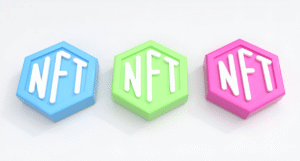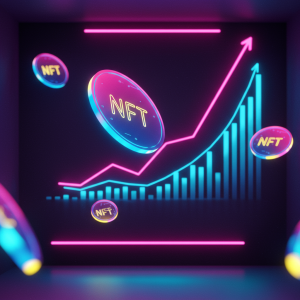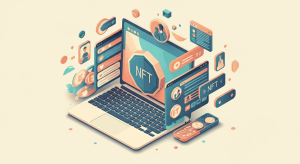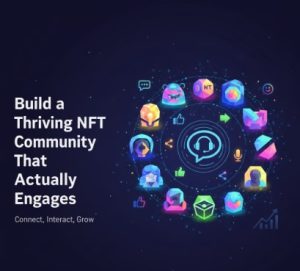How Cross-Chain Standards Are Building the Foundation for a Unified Digital Asset Ecosystem

The blockchain space began as a collection of isolated islands—each with its own technology, community, and assets. Bitcoin existed separately from Ethereum, which stood apart from Solana, and so on. But this fragmentation is rapidly changing as cross-chain standards emerge, transforming the landscape from isolated territories into an interconnected continent of digital value.
The Isolation Problem
Early blockchain adopters faced persistent challenges. Assets trapped on one network couldn’t travel to another without centralized exchanges. Developers built similar applications repeatedly across different chains. Users juggled multiple wallets and interfaces.
This fragmentation created significant friction, slowing mainstream adoption and limiting the true potential of blockchain technology. The vision of an internet of value remained constrained by these technological borders that prevented seamless interaction between ecosystems.
The solution to this fragmentation has emerged through cross-chain standards—shared protocols and frameworks that allow previously isolated networks to communicate and transfer value between one another.
Bridge Protocols: The First Connectors
The earliest attempts at cross-chain functionality came through bridge protocols. These systems created pathways for assets to move between blockchains, often using techniques like wrapped tokens or liquidity pools to represent assets from one chain on another.
While revolutionary, these early bridges came with significant limitations. Many relied on centralized components or small validator sets, creating security vulnerabilities. High-profile bridge hacks demonstrated these weaknesses, with billions lost in exploits targeting these cross-chain connectors.
The challenges faced by these first-generation solutions highlighted the need for more robust standards—protocols built directly into the foundation of blockchain networks rather than layered on top as afterthoughts.
The Rise of Interoperability Frameworks
Today’s most promising cross-chain standards take a more fundamental approach. Rather than simply building bridges between existing systems, they create shared frameworks that blockchains can adopt to ensure native compatibility.
The Inter-Blockchain Communication Protocol (IBC) pioneered by the Cosmos ecosystem demonstrates this approach. By establishing a standardized way for blockchains to package and verify information from other networks, IBC creates a common language that any blockchain can implement.
Similar approaches are emerging across the industry. Polkadot’s cross-consensus messaging format (XCM) and Ethereum’s cross-domain messaging standards each provide frameworks for previously isolated networks to interact with standardized rules and security guarantees.
At NFTMarketo.com, we’ve watched these developments closely, recognizing that cross-chain compatibility represents the next essential evolution for digital assets and the communities built around them.
NFTs Across Chains: A Case Study
Perhaps nowhere is the impact of cross-chain standards more visible than in the NFT space. Initially confined primarily to Ethereum, non-fungible tokens now flow between multiple ecosystems through emerging standards like the Cross-Chain NFT Protocol.
These standards establish shared rules for how unique digital assets can maintain their provenance and properties when moving between networks. An artwork minted on Ethereum can travel to Solana while maintaining verifiable proof of its origin and history.
For creators and collectors, this interoperability unlocks new possibilities—broader markets, diverse technological capabilities, and reduced dependency on any single blockchain’s limitations.
The Push for Universal Asset Standards
Beyond simple asset transfers, the most ambitious cross-chain standards aim to create universal frameworks for how digital assets are defined across all blockchains.
Proposals like the Token Asset Reference Standard seek to establish common ways of describing any tokenized asset—fungible or non-fungible—that would be recognized across every compatible blockchain.
These universal definitions would allow developers to build applications that seamlessly interact with assets regardless of their native blockchain, much like how websites can display content regardless of which server it originates from.
Data Availability and Cross-Chain Truth
Perhaps the most challenging aspect of building cross-chain standards involves establishing consensus on shared facts across independent networks. How can Blockchain A be certain about the state of Blockchain B without simply trusting a potentially fallible intermediary?
Solutions like zero-knowledge proofs and optimistic verification systems are emerging to address this fundamental challenge. These cryptographic approaches allow one blockchain to mathematically verify facts about another blockchain’s state without requiring complete knowledge of that blockchain.
This technological breakthrough enables truly trustless interaction between previously isolated networks—the holy grail of cross-chain functionality.
The Road Ahead
The emergence of robust cross-chain standards signals a new era for blockchain technology—one where the borders between networks fade in importance as interoperability becomes the default rather than the exception.
For users, this shift promises significant improvements in experience. Imagine accessing all your digital assets through a single interface, regardless of which blockchain holds them. Envision applications that can seamlessly incorporate the best features from multiple networks without forcing users to understand the underlying complexity.
For developers, these standards dramatically expand possibilities. Rather than choosing a single blockchain to build on—and accepting its limitations—teams can leverage the unique strengths of multiple networks within unified applications.
The blockchain industry’s journey from fragmentation toward unification through cross-chain standards mirrors the internet’s own evolution. Just as early computer networks eventually adopted shared protocols like TCP/IP to create the seamless worldwide web we know today, blockchain networks are finding their common language.
This foundation of interoperability isn’t merely a technical achievement—it’s the essential infrastructure needed to fulfill blockchain technology’s promise of a truly open, accessible, and unified digital asset ecosystem.








